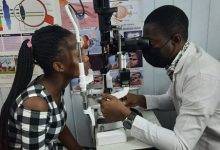The website contains very useful information about breast cancer. I have used a lot of information from the website for this piece.
In 2020, there were 2.3 million women diagnosed with breast cancer and 685 000 deaths globally. As of the end of 2020, there were 7.8 million women alive who were diagnosed with breast cancer in the past 5 years, making it the world’s most prevalent cancer. Breast cancer occurs in every country of the world in women at any age after puberty but with increasing rates in later life. Female gender is the strongest breast cancer risk factor. Approximately 0.5–1% of breast cancers occur in men. The treatment of breast cancer in men follows the same principles of management as for women.
This year’s breast cancer awareness month theme, Thrive365. This theme emphasizes the importance of a holistic approach to breast cancer prevention and encourages individuals to prioritise their overall well-being throughout the year.
Certain factors increase the risk of breast cancer including increasing age, obesity, harmful use of alcohol, family history of breast cancer, history of radiation exposure, reproductive history (such as age that menstrual periods began and age at first pregnancy), tobacco use and postmenopausal hormone therapy. Approximately half of breast cancers develop in women who have no identifiable breast cancer risk factor other than gender (female) and age (over 40 years).
Family history of breast cancer increases the risk of breast cancer, but most women diagnosed with breast cancer do not have a known family history of the disease. Lack of a known family history does not necessarily mean that a woman is at reduced risk.
Certain inherited high penetrance gene mutations greatly increase breast cancer risk, the most dominant being mutations in the genes BRCA1, BRCA2 and PALB-2. Women found to have mutations in these major genes may consider risk reduction strategies such as surgical removal of both breasts. The person that readily comes to mind in this regard is the famous actress, Angelina Jolie. Perhaps we need more of such high-profile persons with breast cancer to step out in Ghana as well.
In 2020, breast cancer was the most frequently diagnosed cancer in women worldwide and accounted for 29.5% of cancer incidence and 22.1 per cent of cancer deaths in Africa. In Ghana, breast cancer accounted for 31.8 per cent of cancer incidence. It is more common to be diagnosed with advanced breast cancer in African countries, when compared to Western countries, as evidenced by around 70% of women being initially diagnosed in Ghana with advanced breast cancer breast cancer. Contributing factors for this phenomenon include poor recognition and appraisal of breast cancer symptoms, fear and denial, sociocultural beliefs, financial and health system impediments, and the absence of screening programmes.
The fight against breast cancer in Ghana is hampered by myths and misconceptions about the disease which result in late presentation. This issue is identified in the National Cancer Plan. In Ghana most patients (50-70%) present with advanced (stage III and IV) disease, many months (8-10 months) after first noticing a change in their breasts. The biological nature of breast cancers in Ghana confers a poorer prognosis and the delay therefore increases the disease burden.
Breast self-examination should be taught as a means of creating breast cancer awareness and for encouraging early detection of diseases of the breast. This education should start from the age of sixteen and should be taught in all schools. I will take it further to all facets of our society-Religious activities, festivals, the mass media all throughout the year. A combination of role play (drama, power point presentation and questions and answers sessions proved successful in a paper by Nsaful et al. The impact of a breast cancer educational intervention in Ghanaian high schools. BMC Cancer (2022) 22:893.
The important message is to make women report any change in their breast. Breast awareness education should also be combined with education addressing the many misconceptions about breast cancer. Educational messages should emphasize early detection and the importance of having prompt, recommended and adequate treatment. This also reduces the stigma associated with the disease.
Breast self-examination should be done a week after the menstrual periods in pre-menopausal, and on a particular day of each month for postmenopausal women. Clinical Breast Examination should be done every three years for those who are below 35 years of age and once a year for those who are 35 years and above. Mammography would be used for women who are 40 years and above.
It needs to be stressed that Carcinogenesis is generally a slow process and often takes decades from tumor initiation to diagnosis, offering a considerable time frame for chemo preventive approaches. Chemoprevention is defined as the use of specific natural (dietary) or synthetic agents to prevent, delay, or slow the carcinogenic process.
The identification of dietary components as potential cancer chemo preventive agents in the form of functional foods or nutraceuticals has become an essential subject for study in current research. This is the case for polyphenols, natural dietary compounds present in fruits and vegetables, which have attracted a great deal of interest because of their potential ability to act as highly effective chemo preventive agent. Polyphenol-rich cocoa fills this very well.
By Dr. Edward O. Amporful
****
The writer is the Chief Pharmacist, Cocoa Clinic



